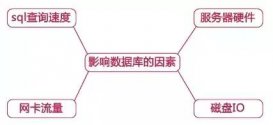MySQL 賦予用戶權(quán)限命令的簡(jiǎn)單格式可概括為:
|
1
|
grant 權(quán)限 on 數(shù)據(jù)庫(kù)對(duì)象 to 用戶 |
一、grant 普通數(shù)據(jù)用戶,查詢、插入、更新、刪除 數(shù)據(jù)庫(kù)中所有表數(shù)據(jù)的權(quán)利
|
1
2
3
4
|
grant select on testdb.* to common_user@'%'grant insert on testdb.* to common_user@'%'grant update on testdb.* to common_user@'%'grant delete on testdb.* to common_user@'%' |
或者,用一條 MySQL 命令來替代:
|
1
|
grant select, insert, update, delete on testdb.* to common_user@'%' |
二、grant 數(shù)據(jù)庫(kù)開發(fā)人員,創(chuàng)建表、索引、視圖、存儲(chǔ)過程、函數(shù)等權(quán)限
grant 創(chuàng)建、修改、刪除 MySQL 數(shù)據(jù)表結(jié)構(gòu)權(quán)限。
|
1
2
3
|
grant create on testdb.* to developer@'192.168.0.%'; grant alter on testdb.* to developer@'192.168.0.%'; grant drop on testdb.* to developer@'192.168.0.%'; |
grant 操作 MySQL 外鍵權(quán)限:
|
1
|
grant references on testdb.* to developer@'192.168.0.%'; |
grant 操作 MySQL 臨時(shí)表權(quán)限:
|
1
|
grant create temporary tables on testdb.* to developer@'192.168.0.%'; |
grant 操作 MySQL 索引權(quán)限:
|
1
|
grant index on testdb.* to developer@'192.168.0.%'; |
grant 操作 MySQL 視圖、查看視圖源代碼權(quán)限:
|
1
2
|
grant create view on testdb.* to developer@'192.168.0.%'; grant show view on testdb.* to developer@'192.168.0.%'; |
grant 操作 MySQL 存儲(chǔ)過程、函數(shù)權(quán)限:
|
1
2
3
|
grant create routine on testdb.* to developer@'192.168.0.%'; -- now, can show procedure status grant alter routine on testdb.* to developer@'192.168.0.%'; -- now, you can drop a procedure grant execute on testdb.* to developer@'192.168.0.%'; |
三、grant 普通 DBA 管理某個(gè) MySQL 數(shù)據(jù)庫(kù)的權(quán)限
|
1
|
grant all privileges on testdb to dba@'localhost' |
其中,關(guān)鍵字 “privileges” 可以省略。
四、grant 高級(jí) DBA 管理 MySQL 中所有數(shù)據(jù)庫(kù)的權(quán)限:
|
1
|
grant all on *.* to dba@'localhost' |
五、MySQL grant 權(quán)限,分別可以作用在多個(gè)層次上
1. grant 作用在整個(gè) MySQL 服務(wù)器上:
|
1
2
|
grant select on *.* to dba@localhost; -- dba 可以查詢 MySQL 中所有數(shù)據(jù)庫(kù)中的表。 grant all on *.* to dba@localhost; -- dba 可以管理 MySQL 中的所有數(shù)據(jù)庫(kù) |
2. grant 作用在單個(gè)數(shù)據(jù)庫(kù)上:
|
1
|
grant select on testdb.* to dba@localhost; -- dba 可以查詢 testdb 中的表。 |
3. grant 作用在單個(gè)數(shù)據(jù)表上:
|
1
|
grant select, insert, update, delete on testdb.orders to dba@localhost; |
這里在給一個(gè)用戶授權(quán)多張表時(shí),可以多次執(zhí)行以上語(yǔ)句。例如:
|
1
2
|
grant select(user_id,username) on smp.users to mo_user@'%' identified by '123345'; grant select on smp.mo_sms to mo_user@'%' identified by '123345'; |
4. grant 作用在表中的列上:
|
1
|
grant select(id, se, rank) on testdb.apache_log to dba@localhost; |
5. grant 作用在存儲(chǔ)過程、函數(shù)上:
|
1
2
|
grant execute on procedure testdb.pr_add to 'dba'@'localhost'grant execute on function testdb.fn_add to 'dba'@'localhost' |
六、查看 MySQL 用戶權(quán)限
查看當(dāng)前用戶(自己)權(quán)限:
|
1
|
show grants; |
查看其他 MySQL 用戶權(quán)限:
|
1
|
show grants for dba@localhost; |
七、撤銷已經(jīng)賦予給 MySQL 用戶權(quán)限的權(quán)限。
revoke 跟 grant 的語(yǔ)法差不多,只需要把關(guān)鍵字 “to” 換成 “from” 即可:
|
1
2
|
grant all on *.* to dba@localhost; revoke all on *.* from dba@localhost; |
八、MySQL grant、revoke 用戶權(quán)限注意事項(xiàng)
1. grant, revoke 用戶權(quán)限后,該用戶只有重新連接 MySQL 數(shù)據(jù)庫(kù),權(quán)限才能生效。
2. 如果想讓授權(quán)的用戶,也可以將這些權(quán)限 grant 給其他用戶,需要選項(xiàng) “grant option“
|
1
|
grant select on testdb.* to dba@localhost with grant option; |
這個(gè)特性一般用不到。實(shí)際中,數(shù)據(jù)庫(kù)權(quán)限最好由 DBA 來統(tǒng)一管理。
補(bǔ)充:
mysql授權(quán)表共有5個(gè)表:user、db、host、tables_priv和columns_priv。
授權(quán)表的內(nèi)容有如下用途:
user表
user表列出可以連接服務(wù)器的用戶及其口令,并且它指定他們有哪種全局(超級(jí)用戶)權(quán)限。在user表啟用的任何權(quán)限均是全局權(quán)限,并適用于所有數(shù)據(jù)庫(kù)。例如,如果你啟用了DELETE權(quán)限,在這里列出的用戶可以從任何表中刪除記錄,所以在你這樣做之前要認(rèn)真考慮。
db表
db表列出數(shù)據(jù)庫(kù),而用戶有權(quán)限訪問它們。在這里指定的權(quán)限適用于一個(gè)數(shù)據(jù)庫(kù)中的所有表。
host表
host表與db表結(jié)合使用在一個(gè)較好層次上控制特定主機(jī)對(duì)數(shù)據(jù)庫(kù)的訪問權(quán)限,這可能比單獨(dú)使用db好些。這個(gè)表不受GRANT和REVOKE語(yǔ)句的影響,所以,你可能發(fā)覺你根本不是用它。
tables_priv表
tables_priv表指定表級(jí)權(quán)限,在這里指定的一個(gè)權(quán)限適用于一個(gè)表的所有列。
columns_priv表
columns_priv表指定列級(jí)權(quán)限。這里指定的權(quán)限適用于一個(gè)表的特定列。
以上這篇淺談MySQL中授權(quán)(grant)和撤銷授權(quán)(revoke)用法詳解就是小編分享給大家的全部?jī)?nèi)容了,希望能給大家一個(gè)參考,也希望大家多多支持服務(wù)器之家。














